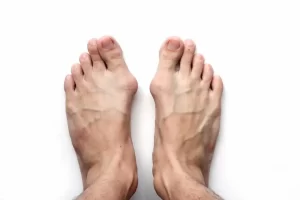
Feeling so alone!
The despair.
Not knowing what to do next. How can I live this way?
Why should I live this way? These are some of the thoughts that are in severely depressed persons’ thoughts.
Drastically this can lead to suicide! Remarkably, Latinos have a lower suicidal risk that most ethnic backgrounds. This is changing, and the suicide rate is rising. Why?
Family and socially oriented.
Latinos, through generations, are raised in a system of family, friendship, and being together. Latinos believe in living and existing within an extended family. We are very social. We all remember when our aunts, uncles, cousins, and neighbors would come over. Suddenly someone would sing or dance. We would all join in. Everyone shared happiness.
This closeness helps us identify a family member with problems or is suffering — when someone needed their hands held or when they needed a shoulder to cry on. This enabled us as everyone in “La Familia” recognized when something may be wrong and offered a helping hand or an ear to listen to. This usually protects Latinos from suicide but not depression. This protection is dwindling slowly.



Stressors.
Latinos have stressors that can lead to hopeless feelings of depression, which can lead to suicidal thoughts. Hispanics’ stressors include poverty, immigration, cultural changes, language, and discrimination that may place them at risk for mental health problems. The family bonds in the past have helped deal with the stressors. Add that to the Coronavirus pandemic that makes us distance our self and all is made worse.
Our Protective System is eroding. Adjusting to a new culture and variant customs has eroded our protective barrier.
What is Acculturative stress?
Wikipedia defines it as “the process of social, psychological, and cultural change that stems from balancing two cultures while adapting to society’s prevailing culture. Acculturation is when an individual adopts, acquires, and adjusts to a new cultural environment.”
In combination with being away from our family, being in a new country, state, or county, learning a language, facing prejudices all contribute to possible depression.
When that depression leads us to despair, that emotional pain, the feeling you are without hope that we need to watch for.
Risk factors to watch for include depression, bipolar disorder, anorexic, panic disorder, schizophrenia, or withdrawal.
Surprised when someone commits suicide, we often think back and see the signs we missed.


Listen to each other.
Care for each other
Worried about each other.
“Someone once asked me, “what can I do to help?” I didn’t know, but while I pondered that question, I realize… I am not alone – and that made all the difference.”
Facts and Stats
- By 2060, the number of Latino people in the United States is projected to grow to 119 million, or 28.6 percent of the population.
- Nineteen percent of Latino people in the U.S. live in poverty.
- There is a perception in Latinos communities, especially among older people, that discussing problems with mental health can create embarrassment and shame for the family, resulting in fewer people seeking treatment.
- Serious mental illness rose from 4 percent to 6.4 percent in Latino people ages 18-25, and from 2.2 percent to 3.9 percent in the 26-49 age range between 2008 and 2018.
- Major depressive episodes increased from 12.6 percent-15.1 percent in Latinx/Hispanic youth ages 12-17, 8 percent to 12 percent in young adults 18-25, and 4.5 percent to 6 percent in the 26-49 age range between 2015 and 2018.
- Suicidal thoughts, plans, and attempts are also rising among Latino young adults. While still lower than the overall U.S. population aged 18-25, 8.6 percent (650,000) of Latinx/Hispanic 18-25 year-olds had serious thoughts of suicide in 2018, compared to 7 percent (402,000) in 2008. Three percent (224,000) made a plan in 2018, compared to 2 percent (116,000) in 2008, and 2 percent (151,000) made an attempt in 2018, compared to 1.6 percent (90,000) in 2008.
- Binge drinking, smoking (cigarettes and marijuana), illicit drug use, and prescription pain reliever misuse are more frequent among Latino adults with mental illnesses.
- Poor communication with health care providers is often an issue. There is a shortage of bilingual or Spanish speaking mental health professionals.


